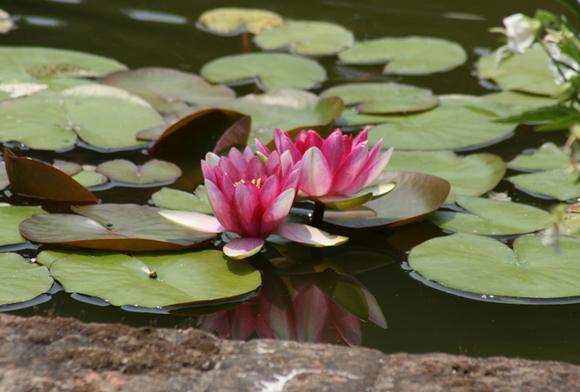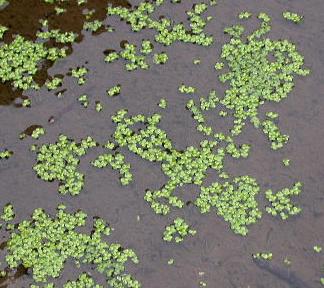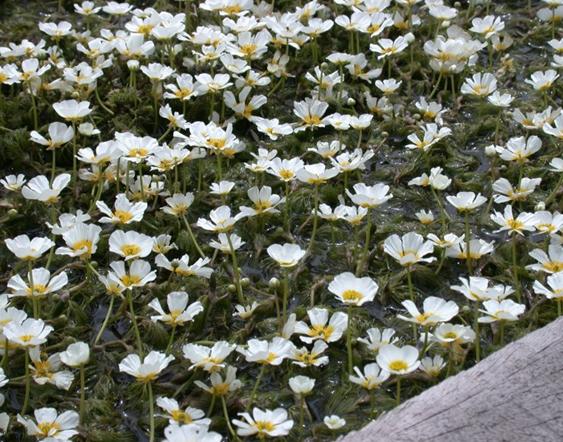Categories
Calendars
Guides
Reviews
Archive
Gallery
Articles
Ask Our Gardening Expert
Plants for the Water Garden
Look for advice when buying to determine weed potential.
The largest group of deep water plants are the water lilies (Nymphaea) , require a depth of 45-150 cm. Their floating leaves cut out light, reducing algae to keep the water clear. They arrive in baskets and are placed in the water on a stack of bricks which is gradually lowered to the bottom when the leaves develop and reach the surface.
The leaves of water lily (Nymphaea) cut out light and help reduce algae
The surface floaters obtain their nutrients through unanchored roots. They range in size from the small duckweeds (Lemna) to water hyacinths (Eichornia). The provide shelter, like the lilies but may only survive the warmer temperatures of the summer and die in winter. They are still worthwhile, however. The Canadian pond weed (Elodia) is an effective oxygenator but is invasive and will choke small ponds. The native, curled pondweed (Potamogeton crispus), is a better choice.
Marginal plants are grown at the edges, in shallow water, 7-15 cm deep. Usually, there is a shelf built around the edge to accommodate these plants. They provide a transitional zone between land and water. Marginals are planted in perforated pots set with their top at water level. The irises are invaluable and so are water crowfoot (Ranunculus), marsh marigold (Caltha palustris) and bog bean (Menyanthes trifoliate).
Water crowfoot
Mat forming plants grow from ground around the edges, softening the outline and helping to reduce algae. Crassula helmsii and Viola hederaceae can tolerate long periods under water. During drought, most can die back to their underground stems.
Gunnera
Gunnera and astilbe are two of the better known plants that can tolerate occasional flooding. They can be planted with marginal plants around informal pools. Refer to nursery catalogues and plant information to place plants of different heights and growth habits in thoughtful arrangements to give interest throughout the season.
Astilbe
Plants are essential to any water garden. Flowers and foliage provide interest, link the water to the rest of the garden and help maintain clear water and an environment for fish. Water plants can become invasive weeds and can take over vulnerable wild waterways if they escape.
Water plants can be divided into groups according to their requirements. Some are regarded as good oxygenators but as long as the pond is not overplanted and kept clear of dead vegetation, oxygen levels will be maintained by photosynthesis and turbulence. 



